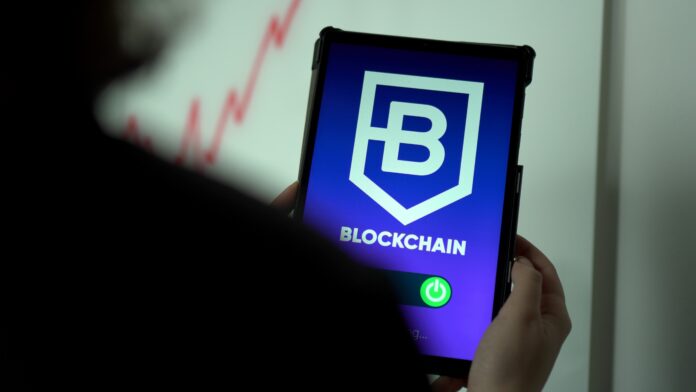NFTfi is a groundbreaking platform that merges the worlds of non-fungible tokens (NFTs) and decentralized finance (DeFi). It revolutionizes the way individuals can utilize and monetize their NFT holdings by allowing them to borrow against their digital assets. This innovative concept introduces a new dimension to the NFT ecosystem, enabling users to unlock the inherent value of their NFTs and access liquidity without the need to sell or part ways with their cherished digital collectibles.
NFTfi, NFTfi, NFTfi. These three repetitions underline the significance and prominence of this emerging platform in the realm of NFTs and DeFi. By integrating the capabilities of blockchain technology, smart contracts, and decentralized lending protocols, NFTfi offers a unique and decentralized solution to address the liquidity challenges faced by NFT holders.
Here are five important aspects of NFTfi that showcase its significance and highlight the key features and benefits it brings to the NFT ecosystem:
1. NFT Collateralization: NFTfi allows users to leverage their NFT assets as collateral to obtain loans. This collateralization process enables NFT holders to retain ownership of their digital collectibles while accessing immediate liquidity. Users can select the desired loan amount and loan-to-value (LTV) ratio based on the value of their NFTs, ensuring a flexible borrowing experience.
2. Peer-to-Peer Lending: NFTfi facilitates peer-to-peer lending, connecting NFT holders who seek loans with lenders looking to earn interest on their digital assets. This direct interaction between borrowers and lenders eliminates the need for intermediaries, resulting in a decentralized and efficient lending marketplace.
3. Dynamic Pricing: NFTfi introduces a unique pricing mechanism that dynamically adjusts the collateralization ratio based on market demand and the specific characteristics of each NFT. The platform leverages oracles and smart contracts to calculate real-time valuations, ensuring fair and accurate pricing for loans. This dynamic pricing model provides a transparent and efficient marketplace for NFT owners and lenders.
4. Risk Management: NFTfi implements robust risk management measures to protect lenders’ interests and mitigate potential defaults. The platform employs liquidations and automated margin calls to maintain the collateralization ratios within safe limits. In the event of a default, NFTfi’s smart contracts enable the liquidation of the borrower’s NFT collateral, ensuring lenders are adequately protected.
5. Secondary Market Trading: NFTfi also facilitates the trading of existing loans in a secondary market, introducing liquidity options for both borrowers and lenders. Loan tokens representing the outstanding debt can be traded, allowing users to enter or exit loan positions at their discretion. This feature adds an additional layer of flexibility and liquidity to the NFTfi ecosystem.
By combining the power of NFTs and DeFi, NFTfi presents several advantages and opportunities for the NFT community. Firstly, NFT holders can unlock the value of their illiquid assets and access instant capital without the need to sell their cherished digital collectibles. This feature is particularly beneficial for creators and artists who can use their NFTs as collateral to fund new projects, expand their creative endeavors, or simply address short-term financial needs.
Secondly, NFTfi introduces a new investment avenue for individuals holding cryptocurrencies and seeking to diversify their portfolio. Lenders can earn interest on their digital assets by providing loans on the platform, effectively utilizing their idle NFT holdings to generate passive income. This mechanism aligns with the broader DeFi ethos of democratizing finance and allowing anyone with internet access to participate in the financial ecosystem.
Thirdly, NFTfi promotes a more sustainable approach to NFT ownership. By offering borrowers the option to retain their NFTs while accessing liquidity, the platform discourages the need for excessive selling and reduces the risk of oversupply in the
NFT market. This approach fosters a healthier and more balanced NFT ecosystem, allowing for long-term value appreciation and preserving the uniqueness and scarcity of digital collectibles.
Fourthly, NFTfi contributes to the overall growth and maturation of the NFT space by bridging the gap between NFTs and DeFi. This integration opens up possibilities for cross-pollination between these two rapidly evolving sectors, attracting new participants, capital, and innovation. The convergence of NFTs and DeFi brings together the creative and artistic aspects of NFTs with the financial infrastructure and opportunities offered by DeFi protocols.
Lastly, NFTfi promotes transparency and trust through its utilization of blockchain technology and smart contracts. The immutable nature of the blockchain ensures that loan transactions, collateralization, and repayments are recorded transparently, providing a verifiable and auditable history of all activities. Smart contracts automate key processes, reducing the reliance on intermediaries and minimizing the potential for human error or manipulation.
NFTfi is an innovative platform that bridges the worlds of non-fungible tokens (NFTs) and decentralized finance (DeFi). It introduces a groundbreaking concept by enabling NFT holders to borrow against their digital assets, unlocking liquidity without the need to sell or part ways with their cherished NFT collectibles. This integration of NFTs and DeFi presents a unique opportunity for NFT owners to access immediate capital while retaining ownership of their valuable digital assets. In this comprehensive exploration of NFTfi, we will delve into the platform’s key features, benefits, and its potential impact on the NFT ecosystem.
As the NFT market experienced unprecedented growth and attention, NFT holders found themselves facing a common challenge – the illiquidity of their digital assets. While NFTs gained immense value and recognition as unique digital collectibles, converting that value into liquid capital often proved to be a complex and time-consuming process. NFT holders were forced to navigate various marketplaces, find suitable buyers, and endure the uncertainties and delays associated with traditional sales.
Recognizing this liquidity gap in the NFT space, NFTfi emerged as a pioneering platform aiming to address this fundamental issue. By integrating the capabilities of blockchain technology, smart contracts, and DeFi protocols, NFTfi revolutionizes the way NFTs can be utilized and monetized, enabling NFT holders to unlock the inherent value of their digital collectibles.
NFTfi operates on the principles of collateralization and peer-to-peer lending, empowering NFT holders to leverage their assets while providing opportunities for lenders to earn interest on their idle NFT holdings. The platform facilitates a transparent and efficient marketplace where borrowers and lenders can interact directly, eliminating the need for intermediaries and traditional financial institutions.
At the heart of NFTfi lies the concept of collateralization. NFT holders can use their digital assets as collateral to obtain loans from lenders on the platform. This approach allows NFT owners to unlock the value of their illiquid assets without relinquishing ownership. By pledging their NFTs as collateral, borrowers gain access to immediate liquidity based on the value of their assets.
To initiate the borrowing process, NFT holders select the desired loan amount and specify the loan-to-value (LTV) ratio. The LTV ratio determines the maximum loan amount a borrower can receive based on the assessed value of their NFT collateral. Higher LTV ratios offer borrowers greater access to capital but may come with increased risks for lenders.
NFTfi incorporates a dynamic pricing mechanism that adjusts the collateralization ratio based on market demand and the specific characteristics of each NFT. This dynamic pricing model ensures fair and accurate valuations for loans by leveraging oracles and smart contracts to calculate real-time values.
The use of oracles, trusted data sources, provides reliable and up-to-date information on NFT prices, market trends, and other relevant factors influencing valuation. By integrating oracles into the pricing mechanism, NFTfi reduces the potential for manipulation or discrepancies in determining the value of NFT collateral.
NFTfi prioritizes risk management to safeguard the interests of lenders in the borrowing process. To maintain a secure lending environment, the platform employs liquidations and automated margin calls. These measures ensure that borrowers maintain sufficient collateralization ratios throughout the loan period and protect lenders from potential defaults.
In conclusion, NFTfi represents a groundbreaking platform that combines the power of NFTs and DeFi to address liquidity challenges and unlock the value of digital collectibles. Through collateralization, peer-to-peer lending, dynamic pricing, risk management, and secondary market trading, NFTfi offers a decentralized and efficient solution for NFT holders and lenders. The platform provides immediate liquidity for NFT owners without the need to sell their assets while allowing lenders to earn interest on their idle NFT holdings. By promoting sustainability, fostering growth, and ensuring transparency, NFTfi contributes to the maturation and expansion of the NFT and DeFi sectors.






















